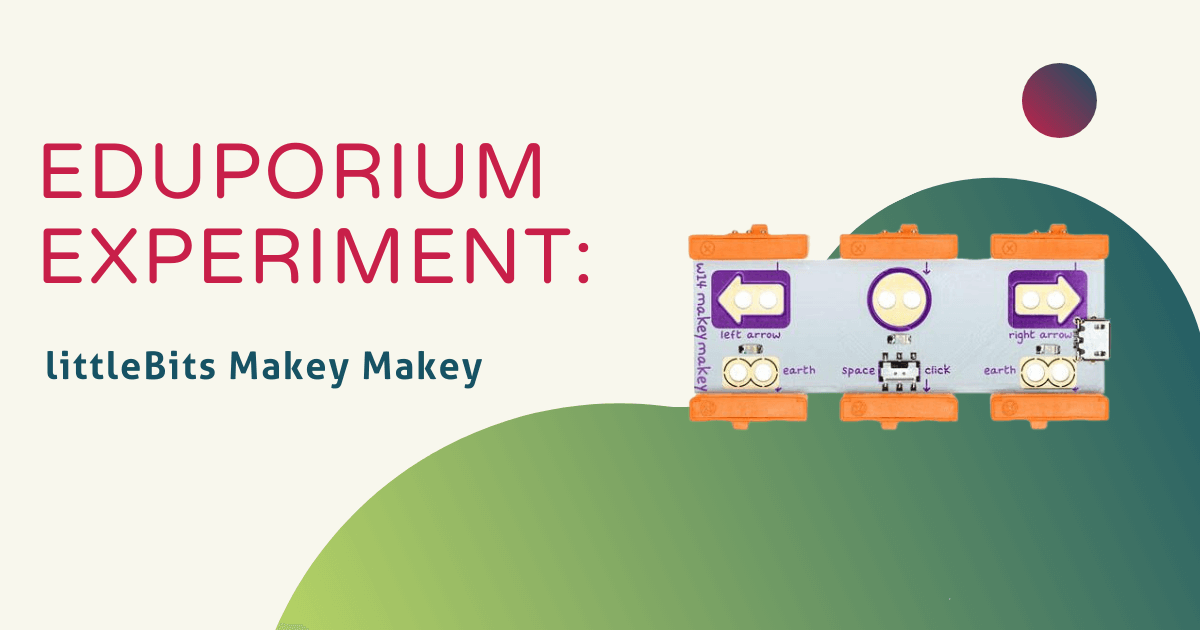Using the next-step-ahead thinking approach that we try to instill in today’s students, I found myself thinking how cool it would be if someone would combine two tools into one better, stronger tool. Then I remembered that somebody already did that and then I also remembered it was time to review the littleBits Makey Makey for the Eduporium Experiment. We’re guessing you’re already familiar with both littleBits and the Makey Makey, but, if you’re not, you can learn a bit about them on our blog and store. Basically, littleBits are electronic building blocks that each have their own specific function and allow kids to build inventions with purpose. And the Makey Makey is a tiny board that acts as a computer interface and uses your natural conductivity to control objects like they’re a touchpad.
Now that we’re all up to speed (and now that you probably want one), it seems it would be a good time to learn why this product is valuable in the classroom. The littleBits Makey Makey is an awesome tool for inspiring forward-thinking inventors because the pieces constantly keep kids engaged and compel them to consider how their actions now will affect the structure as a whole. It’s also a great way to add dynamic new dimensions to project-based learning as it enhances student engagement through its series of pre-designed experiments and projects.

To get the littleBits Makey Makey to work, I tried to picture that the Makey Makey bit was essentially a tiny Makey Makey in a different form than I was used to seeing it. Before getting started, it’s important to note that there are three different types of interactions for students to explore: Touch to Bit (trigger your Bits with any object), Bit to computer (use regular Bits to control cursors on your computer) and Touch to computer (use any object that holds electricity to control cursors on your computer).
Naturally, I had to try this new way of controlling my computer cursor with a different object—like I have done with the Makey Makey so many times. On the littleBits website, there are project suggestions for building a piano out of fruit. We only had a couple of pieces in our office, so I had to improvise with a few other objects as well. All I needed was the littleBits modules pictured above, a laptop and the objects I would test for conductivity.

As was expected, the fruit worked perfectly and exactly like it does when used with the actual Makey Makey. I tried a spoon as well and I’m happy to report that it too is conductive. Some of my other instruments included various pens, a Frisbee, a glass plate, a 3D printed dinosaur and a notepad. Can you guess which ones were and were not conductive? Comment below and I’ll let you know if you’re right—we might even feature your correct guesses on our social media pages!
Needless to say, the littleBits Makey Makey is an awesome tool for engaging kids as young as seven or eight years old. It’s perfect for teaching conductivity, problem solving, and planning that can be applied to the solving of almost any real-life conundrum.
If you have any suggestions for products you’d like to see featured in the Eduporium Experiment, let us know! Comment below or send us a message on Twitter or Facebook!



